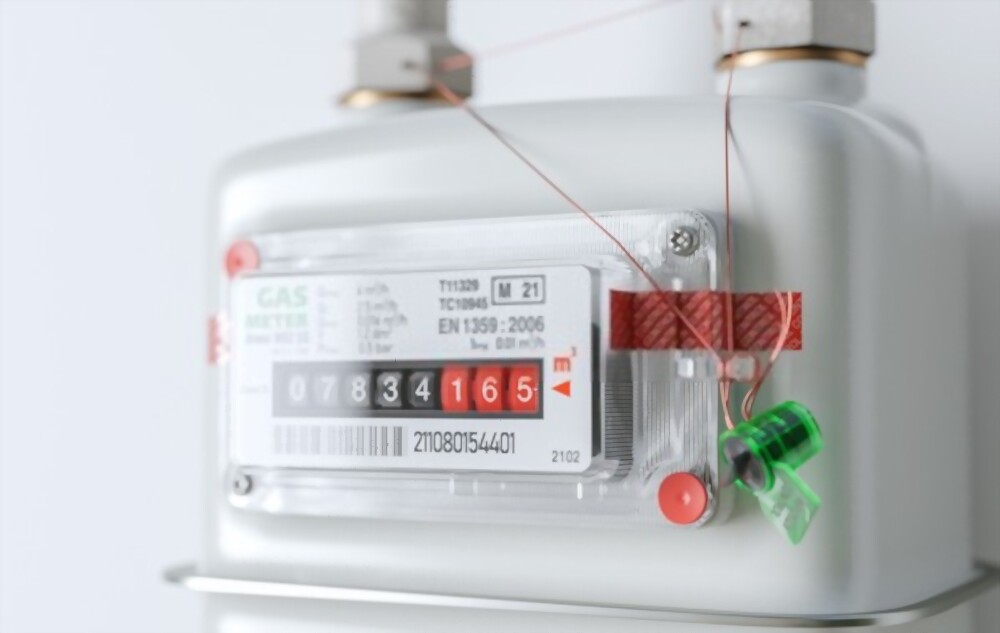Gas meters play a crucial role in accurately measuring natural gas consumption in residential and commercial properties. One of the commonly used gas meters is the diaphragm gas meter. In this blog post, we will explore how it works and explain its functioning step by step. We will also discuss the types of gas meters and highlight the differences between diaphragm and rotary meters.
What are the 2 Types of Gas Meters?
Gas meters come in different types, each with its mechanism for measuring gas consumption. The two primary types of gas meters are diaphragm meters and rotary meters. Let’s explore the characteristics of each type:
What is a Diaphragm Gas Meter?
As the name suggests, a diaphragm gas meter utilizes diaphragms to measure gas flow. These meters are commonly used in residential and small commercial applications. They offer high accuracy and reliability, making them suitable for monitoring household gas consumption. They are known for their robust construction and ability to handle varying gas pressures.
What is a Rotary Gas Meter?
On the other hand, rotary gas meters employ a different mechanism for measuring gas flow. They consist of two rotating impellers or rotors that trap and measure gas as it passes through the meter. Rotary meters are often used in industrial and large-scale commercial settings where high gas volumes are consumed. These meters are known for their durability and ability to handle heavy-duty applications.
Differences Between Diaphragm and Rotary Meters:
Measurement Mechanism
Diaphragm meters rely on the expansion and contraction of diaphragms to measure gas flow, while rotary meters use rotating impellers. This fundamental difference in the measurement mechanism sets the two types of meters apart.
Accuracy and Precision
Diaphragm meters are generally more accurate and precise in measuring gas consumption, especially in low to medium flow rates. They are designed to accurately measure small gas volumes, making them ideal for residential applications. Rotary meters, on the other hand, are better suited for high flow rates and larger volumes of gas.
Pressure Handling
Diaphragm meters can handle a wider range of gas pressures, including variations in pressure within the gas supply network. This flexibility allows them to maintain accuracy even when the gas pressure fluctuates. Rotary meters, although durable, may be more sensitive to pressure changes and require additional pressure regulation.
Application
Diaphragm meters are widely used in residential and small commercial settings due to their accuracy, reliability, and ability to handle low to medium flow rates. They are suitable for monitoring gas consumption in households, apartments, and small businesses. With their capacity to handle high flow rates, rotary meters are commonly used in industrial applications, large commercial buildings, and gas distribution networks.
How Does a Diaphragm Gas Meter Works?
Step 1: Gas Inlet
The diaphragm gas meter starts its operation at the gas inlet. The incoming natural gas flows into the meter through a pipe connected to the supply line. It is important to note that the gas pressure is regulated before entering the meter to ensure a consistent flow.
Step 2: Metering Chambers
Once the gas enters the diaphragm meter, it moves into the metering chambers. These chambers are designed to accommodate the diaphragms, which play a crucial role in the measurement process. The chambers are sealed to prevent any gas leakage.
Step 3: Diaphragm Movement
The diaphragms within the metering chambers are the key components responsible for measuring the gas flow. As the gas flows through the chambers, it causes the diaphragms to expand and contract. This movement is directly proportional to the volume of gas passing through the meter.
Step 4: Recording Mechanism
The movement of the diaphragms is transferred to a recording mechanism, typically a set of gears and dials, which translates the diaphragm movement into a readable measurement. The recording mechanism displays the gas consumption in units such as cubic feet or cubic meters. It allows gas utility companies and consumers to determine their gas usage accurately.
Step 5: Gas Outlet
After measuring the gas, it exits the diaphragm meter through the gas outlet. From here, it continues its journey through the pipeline to its intended destination, such as a gas stove or a heating system.
How Do You Read a Diaphragm Gas Meter?
Reading a diaphragm gas meter is a straightforward process that involves interpreting the numbers and dials on the meter. Here are the steps to read it:
- Locate the gas meter: They are typically installed outside the building or in a utility room. Find the meter and ensure it is easily accessible.
- Identify the dials and numbers: Look for the meter’s series of dials and numbers. Each dial represents a specific unit of measurement, such as cubic feet or cubic meters.
- Start from left to right: Begin reading the dials from left to right. Note down the value of each dial. If a dial is between two numbers, consider the lower number. Some dials may rotate in the opposite direction, so be cautious while reading.
- Calculate the total consumption: Once you have recorded the values of all the dials, add them up to calculate the total gas consumption. This value represents the amount of gas used during a specific period.
- Record the reading: If required, record the gas meter reading for billing or monitoring purposes. Make sure to follow the specific guidelines provided by your gas utility company.
Conclusion
Understanding how a diaphragm meter works is essential for gas utility companies and consumers. The diaphragm gas meter manufacturers have designed these meters to measure gas consumption and provide reliable readings accurately. By comprehending the step-by-step explanation of their functioning, consumers can make informed decisions about gas usage and effectively manage their energy consumption. Whether they use a diaphragm meter for residential applications or a rotary meter for industrial use, gas meters ensure fair and accurate billing while promoting efficient gas utilization.

